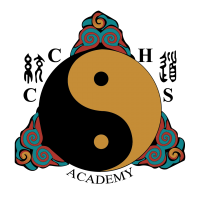Acupuncture Treatment of the 3 Yin Jing-Jin (“Sinew Meridians”): the Medial and Axial Tracts  Dr. Anthony Von der Muhll, L.Ac., DAOM, DNBAO, FAIPM
Dr. Anthony Von der Muhll, L.Ac., DAOM, DNBAO, FAIPM
specializes in sports, orthopedic and neuro-musculoskeletal injuries and pain conditions. He became Licensed as an Acupuncturist in 2003, and was the first graduate of the Five Branches University’s’ Integrative Sports Medicine program. He has served as a Clinical Instructor and Associate Professor at the Five Branches since 2005, and as an Instructor in the Doctorate of Acupuncture and Oriental Medicine Program of the Academy of Chinese Culture and Health Sciences beginning in 2017. He is also a Diplomate of the National Board of Acupuncture Orthopedics, a Fellow of the American Academy of Pain Management, and certified as a Personal Trainer through the American College of Sports Medicine. He is also one of the few traditionally-trained acupuncturists who has also become certified as a Myofascial Trigger Point Therapist (dry needling) through Myopain Seminars. He has 20 years of clinical experience as a sports massage therapist, physical therapy aide, athletic training assistant, and licensed acupuncturist in multi-disciplinary clinics, including SpineMed Associates and the PRIME Pain Medicine Institute. He has also served as an Expert Witness for the California Acupuncture Board (CAB) and in civil malpractice litigation.
January 10, 2022-January 10, 2022 9:00 AM-6:00 AM
Room: 101
8 Category 1 CAB units available
Type: Online Via Livestream or Recorded Lectures
Description:
The 3 yin 经 筋 jing-jin (taiyin, shaoyin, and jueyin–“sinew meridians”) of Chinese medicine describe myofascial tracts that run along the medial and axial regions of the body from head to toe. Understanding the 3 yin jing-jin can guide clinicians from where pain is felt distally and proximally towards additional muscles, tendons, joints and ligaments that also may need treatment. Learn classical and modern examination and treatment of the 3 yin jing-jin tissues, including:
Leg 3 Yin Jing-Jin
- Abductor hallucis
- Deltoid and spring ligaments
- Tibialis posterior
- Flexors hallucis and digitorum
- Popliteus
- Medial collateral ligament and meniscus
- Pes anserinus tendon
- Sartorius
- Gracilis
- Vastus medialis obliquus
- Adductors longus, magnus, and brevis
- Pectineus
- Psoas
- Multifidi
Arm 3 Yin Jing-Jin
- Pectoralis major and minor
- Anterior capsules of glenohumeral and acromioclavicular joints
- Subscapularis
- Serratus anterior
- Coracobrachialis and brachialis
- Supinator
- Pronator teres
- Flexors digitorum and pollicis
- Flexor carpi ulnaris
Course Objectives:
Understanding the 3 yin jing-jin can guide clinicians from where pain is felt distally and proximally towards additional muscles, tendons, joints and ligaments that also may need treatment.
